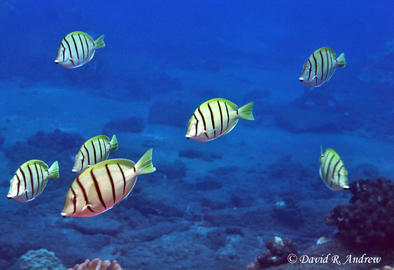Carlos and Allison Estape started their own fish count at Alligator Reef, reigniting their passion for scuba diving on their home reef....
REEF Trips Program and Communications Manager
With the help of REEF volunteers, we can better understand the affect of Sea Star Wasting Syndrome on sea stars.
In collaboration with the Cayman Islands Department of Environment, REEF scientists use hydrophones to listen for Nassau Grouper.
There is an increasing need to examine regional patterns of diversity in coral-reef systems because their biodiversity is declining globally. The authors used REEF data from 80 sites from 6 eco-regions throughout the Caribbean to evaluate patterns of biodiversity. Specifically, they used "additive partitioning", which quantifies the contribution of different types of diversity (alpha and beta; comparing diversity between sites within a region and between regions) to total diversity across different spatial scales.
On December 3rd and 5th, Reef Environmental Education Foundation (REEF) and the Cayman Islands Department of the Environment (DOE) held free educator workshops on Grand Cayman and Cayman Brac.
Do you shop on Amazon? If so, we encourage you to use Amazon Smile. It's the same Amazon experience, same products, prices, and service. And a portion of your purchases will be donated to REEF.
Go to smile.amazon.com and select Reef Environmental Education Foundation, Inc. as your selected charity (or go directly to http://smile.amazon.com/ch/65-0270064). Thank you!
REEF members are at the heart of our grassroots marine conservation programs. Over 50,000 divers, snorkelers, students, and armchair naturalists stand behind our mission.
Every month, scientists, government agencies, and other groups request raw data from REEF’s Fish Survey Project database. Here is a sampling of who has asked for REEF data recently and what they are using it for:
-Fisheries scientist are using data on Hogfish from Florida, Puerto Rico, and the USVI to evaluate population status and help set effective catch limits as part of the US Fisheries Management Council's stock assessment.



